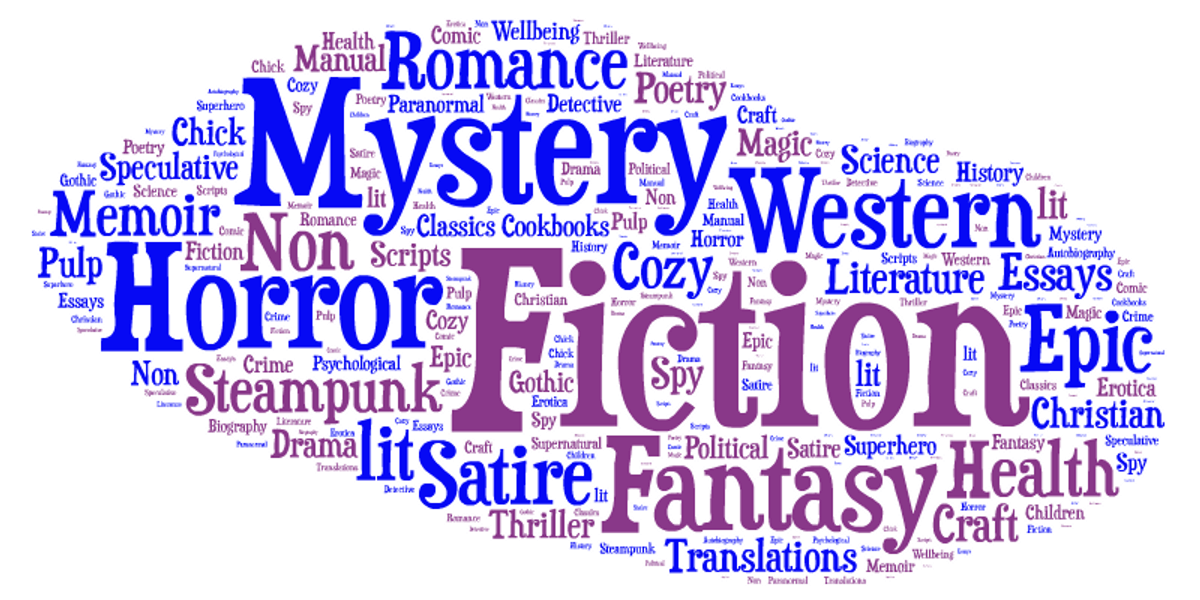In storytelling, literary fiction stands as a beacon of creativity and imagination. It’s a universe where words paint vivid pictures, characters come alive, and emotions leap off the pages. If you’re an aspiring author, navigating the vast landscape of literary fiction can be both exciting and daunting.
Whether you’re looking to write a masterpiece on your own or considering fiction ghostwriters for hire , this guide will walk you through the essentials of literary fiction, its differences from non-fiction, crafting compelling stories, and the path to publishing.
What is Literary Fiction?
 Literary fiction is a genre that delves deep into the human experience. It’s more concerned with exploring emotions, characters’ inner thoughts, and the intricacies of life than just following a straightforward plot. In literary fiction, words are an art form, and each sentence is carefully crafted to evoke feelings and provoke thought. Think of it as a journey into the hearts and minds of characters, a journey that challenges readers to reflect on their own lives.
Literary fiction is a genre that delves deep into the human experience. It’s more concerned with exploring emotions, characters’ inner thoughts, and the intricacies of life than just following a straightforward plot. In literary fiction, words are an art form, and each sentence is carefully crafted to evoke feelings and provoke thought. Think of it as a journey into the hearts and minds of characters, a journey that challenges readers to reflect on their own lives.
Distinguishing Fiction from Non-Fiction
Before diving into the nuances of writing literary fiction, it’s crucial to differentiate it from non-fiction. Non-fiction deals with real events, facts, and information, while fiction is a realm of imagination. Fictional stories are created by the author’s inventiveness, where characters and plots are fabricated. While non-fiction informs and educates, fiction entertains and captivates, letting readers escape into entirely new worlds.
Crafting Your Own Literary Fiction
For new authors stepping into the world of literary fiction, there are a few key elements to keep in mind. First, find your unique voice. Your voice is what sets your writing apart, so embrace it fully. Don’t be afraid to let your personality shine through your words. Second, choose a theme or topic that resonates with you. Whether it’s love, loss, resilience, or friendship, your passion for the subject will infuse authenticity into your writing.
Building Blocks of a Good Fiction Book
A well-crafted fiction book comprises several essential components: a captivating plot, well-developed characters, and a rich setting. The plot is the backbone of your story. The series of events drives the narrative forward, keeping readers engaged. Remember, twists and turns can make the reading experience more exciting.
Characters, on the other hand, are the heart of your story. Create protagonists with strengths, weaknesses, and relatable qualities that readers can connect with. Lastly, the setting should transport readers to a place that feels real. Use descriptive language to paint a vivid picture, allowing readers to immerse themselves fully.
The Intricacies of Plot and Characters
The plot is the roadmap of your story. It outlines the journey your characters undertake, the challenges they face, and the resolution they achieve. Start with an intriguing hook that grabs readers’ attention from the beginning. Develop rising action that builds suspense and tension, leading to a climax – the story’s pivotal moment. Finally, provide a satisfying resolution that ties up loose ends.
Characters breathe life into your story. Craft protagonists with distinct personalities, goals, and motivations to make your stories more readable and exciting. Show their growth and transformation throughout the story. Secondary characters add depth and flavor, contributing to the richness of the narrative. Remember, relatable characters are the ones that readers will root for and remember long after they’ve closed the book.
Path to Publishing: Traditional vs. Self-Publishing
 Congratulations, you’ve finished your literary fiction masterpiece! Now comes the exciting part: getting your work into the world for readers to enjoy. The path to publishing offers two main avenues: traditional publishing and self-publishing. Let’s explore both options in detail so you can make an informed decision that suits your goals and preferences.
Congratulations, you’ve finished your literary fiction masterpiece! Now comes the exciting part: getting your work into the world for readers to enjoy. The path to publishing offers two main avenues: traditional publishing and self-publishing. Let’s explore both options in detail so you can make an informed decision that suits your goals and preferences.
Traditional Publishing:
Preparing Your Manuscript: Once your manuscript is complete, it’s time to prepare it for submission. This involves careful proofreading, editing, and formatting to ensure your work is polished and professional.
Querying Literary Agents or Publishing Houses: In the traditional publishing route, authors typically begin by querying literary agents or submitting directly to publishing houses. A well-crafted query letter introduces your work and piques the agent or publisher’s interest.
Agent Representation: If a literary agent is interested in your manuscript, they will offer representation. Having an agent is advantageous as they have industry connections, negotiating skills, and expertise in navigating the publishing world.
Submission to Publishing Houses: With agent representation, your agent will submit your manuscript to publishing houses that align with your genre and style. Publishers review submissions and decide whether to offer a publishing contract.
Publishing Contract: If a publishing house is interested, they will extend a publishing contract. This contract outlines the terms of publication, including royalties, rights, and marketing arrangements.
Editing and Design: Once under contract, the publishing house’s editorial team works with you to refine your manuscript. They also create a cover design and layout that aligns with the genre and market.
Distribution and Marketing: Traditional publishers handle the distribution of your book to bookstores and online retailers. They also invest in marketing efforts to promote your book through various channels, such as book tours, reviews, and advertisements.
Publication: After the editing, design, and marketing processes are complete, your book is published and available to readers through various outlets.
Self-Publishing:
Editing and Proofreading: Much like traditional publishing, self-publishing requires meticulous editing and proofreading to ensure your book is of high quality.
Formatting: You’ll need to format your manuscript for eBook and print formats. Many online platforms offer formatting guidelines to help you achieve a professional look.
Cover Design: A captivating cover is essential for attracting readers. You can hire a designer or create your own cover using online tools.
Choosing a Publishing Platform: Online platforms like Amazon Kindle Direct Publishing (KDP), Barnes & Noble Press, and others allow you to self-publish your work. These platforms provide step-by-step instructions to guide you through the process.
Distribution: With self-publishing, you retain control over distribution. Your book will be available for purchase on the platform(s) you choose.
Marketing: As a self-published author, marketing falls primarily on your shoulders. Utilize social media, book bloggers, author websites, and other promotional methods to generate interest in your book.
Royalties: While you have more control over pricing, you’ll also receive a higher percentage of royalties through self-publishing compared to traditional publishing.
Revisions: Self-publishing allows you to update your book whenever you want. This flexibility is beneficial if you receive reader feedback or notice areas for improvement.
Both traditional and self-publishing have their merits. Traditional publishing offers the backing of industry professionals, wider distribution, and established marketing channels. Self-publishing grants you creative control, higher royalties, and the ability to publish on your own terms.
Consider your goals, timeline, and resources when deciding which path to take. Whatever route you choose, remember that the publishing journey is rewarding and allows you to share your literary fiction with the world.
The Role of Fiction Ghostwriters

For some aspiring authors, the writing process can be intimidating. This is where fiction ghostwriters come into play. Fiction ghostwriters are professional writers who collaborate with you to bring your story to life. They help ease the writing process by taking your ideas, characters, and plot and transforming them into a polished manuscript. Ghostwriters are skilled at capturing your voice and style, ensuring the final product resonates with your vision.
In literary fiction, storytelling is an art form that captures the essence of the human experience. Crafting your literary masterpiece involves embracing your unique voice, building compelling characters, and constructing an engaging plot. Once your work is complete, the choice between traditional and self-publishing awaits. And if the writing process feels overwhelming, fiction ghostwriting is there to offer their expertise.
So, whether you embark on the journey solo or with a fiction ghostwriter by your side, remember that literary fiction can transport readers to new worlds and touch their hearts in ways they never imagined.



